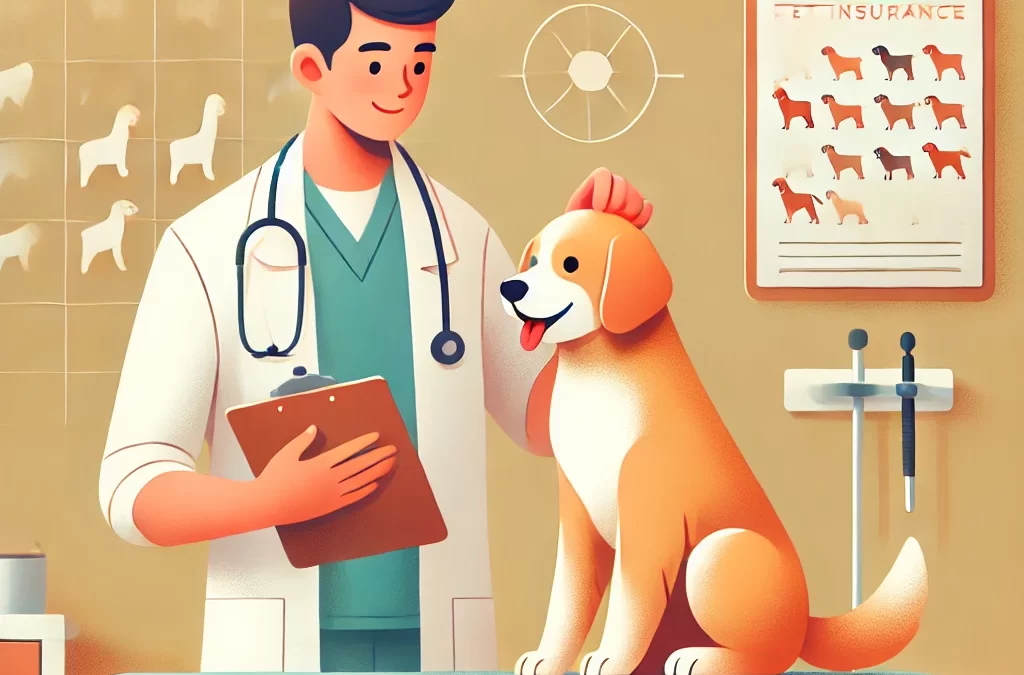
經過 TCMVET | 2025 年 1 月 17 日 | 狗癌症和腫瘤
作為寵物主人,發現狗身上有腫塊可能會令人震驚。人們第一個想到的往往是:“這是癌症嗎?”然而,並非所有腫塊和腫塊都是腫瘤,即使是腫瘤,也不是所有腫瘤都是惡性的。了解不同類型的生長、其潛在原因以及最佳行動方案可以幫助您對您的狗的健康做出明智的決定。
狗身上出現腫塊的常見原因
狗身上出現腫塊的原因有很多,從良性脂肪沉積到更多的癌性腫瘤。以下是一些最常見的原因:
1. 脂肪瘤(脂肪瘤)
脂肪瘤是狗身上最常見的腫塊之一,尤其是老年或超重的狗。這些是皮膚下柔軟、可移動且通常無害的脂肪沉積物。雖然它們通常不需要治療,但如果它們長得太大或妨礙運動,獸醫可能會建議將其移除。
2. Sebaceous Cysts
當毛囊或油腺被阻塞,形成充滿皮脂(一種油膩物質)的腫塊時,就會出現皮脂囊腫。這些囊腫有時會破裂並滲出白色或黃色分泌物。大多數是良性的,但如果被感染,可能需要引流或移除。
3.膿腫
膿腫是腫脹、充滿膿液的區域,通常由感染、昆蟲叮咬或傷口引起。這些腫塊可能是溫暖的、紅色的並且摸起來有疼痛感。膿瘍可能會自行破裂,但通常需要獸醫治療,包括引流和抗生素。
4. 疣(乳頭瘤)
犬疣是由乳頭瘤病毒引起的,通常出現在年幼的狗或免疫系統較弱的狗身上。這些像花椰菜一樣的小生長物通常會自行消退,但如果它們幹擾進食或運動,則可能需要去除。
5.組織細胞瘤
組織細胞瘤是一種良性腫瘤,通常影響年幼的狗。它們表現為小的、紅色的、圓頂狀的腫塊,通常出現在腿、臉或耳朵上。許多組織細胞瘤會在幾個月內自行消退,但有些組織細胞瘤如果持續存在可能需要切除。
6. 肥大細胞腫瘤(MCT)
肥大細胞腫瘤是狗狗最常見的皮膚癌之一。它們的外觀可能有所不同——有些可能看起來像無害的腫塊,而有些則可能會潰爛或發炎。 MCT 可能具有侵襲性,因此任何可疑腫塊都應立即由獸醫進行評估。
7. 軟組織肉瘤
這些惡性腫瘤在結締組織中發展,可能生長緩慢或侵襲性。它們通常感覺很硬,並且可能不容易在皮膚下移動。早期發現和清除對於更好的預後至關重要。
如何辨識腫塊是否有問題
雖然有些腫塊是無害的,但其他腫塊可能需要立即就醫。考慮以下特徵:
- 規模和成長率: 如果腫塊快速生長,則可能表示惡性腫瘤。
- 質地和流動性: 柔軟、可移動的腫塊通常是良性的,而堅硬、附著的腫塊可能更令人擔憂。
- 顏色和外觀: 潰瘍、發炎或出血的腫塊需要立即檢查。
- 疼痛和不適: 如果您的狗對觸摸有不良反應,則可能表示有感染或惡性腫瘤。
如果你發現你的狗身上有腫塊該怎麼辦
1. 監測腫塊
如果腫塊小、軟且不會引起不適,您可以對其進行幾週的監測。記下尺寸、形狀或顏色的任何變化。
2.諮詢獸醫
如果腫塊生長迅速、感覺堅硬、疼痛或質地異常,請安排獸醫就診。您的獸醫可能會進行 細針穿刺切片檢查 (FNA) 或一個 活檢 以確定腫塊是良性還是惡性。
3. 必要時考慮移除
較大、不斷生長或妨礙運動的良性腫塊可能需要手術切除。癌性腫瘤通常需要手術、放射線治療或化學治療。
4.保持健康的生活方式
均衡飲食、定期運動和定期獸醫檢查可以幫助支持您的狗的免疫系統和整體健康,降低腫瘤的風險。
最後的想法
並非狗身上的每個腫塊都會引起恐慌,但最好始終保持警惕。早期發現和適當的獸醫評估可以在確保您的狗的健康和福祉方面發揮重要作用。如果您發現任何新的或變化的腫塊,請立即諮詢獸醫——您毛茸茸的朋友的健康值得額外關注!
您想了解有關任何特定腫塊類型或治療方案的更多資訊嗎?

經過 TCMVET | 2025 年 1 月 16 日 | 狗癌症和腫瘤
當心愛的狗被診斷出患有腫瘤時,對於任何寵物主人來說都是令人心碎的經歷。傳統醫學提供有效的治療方法,例如手術、化療和放療,而自然療法則提供補充益處,支持狗狗的整體健康。結合這兩種方法提供了一種平衡且創新的方法來治療犬腫瘤。本文探討如何設計一個將自然療法與西藥結合的綜合計劃,以獲得最佳結果。
了解每種方法的優點
傳統醫學擅長透過手術、化療、放療和先進的診斷來直接治療腫瘤。這些方法專注於治療腫瘤本身,但可能導致免疫力下降、嗜睡或胃腸道問題等副作用。
自然療法旨在增強身體固有的治癒和應對治療的能力。選擇包括草藥、飲食調整、補充劑、針灸和按摩。這些療法注重狗狗的整體健康,有助於減輕傳統療法的副作用,同時促進復原。
制定綜合治療計劃
與您的獸醫合作,討論腫瘤的類型和階段、可用的治療方案,以及如何在不影響傳統治療的情況下整合自然療法。每隻狗的反應都不同,因此請優先考慮個人需求,包括年齡、整體健康狀況和生活方式。
逐漸引入自然療法,以避免讓你的狗不知所措。從飲食調整開始,例如添加菠菜、胡蘿蔔和魚油等抗癌食物。逐漸加入 CBD 油或藥用蘑菇等補充劑。包括在恢復期間進行針灸或按摩等緩解壓力的做法。
整合自然方法和傳統方法的好處
透過使用薑黃和藥用蘑菇等自然療法來增強治療效果可以增強免疫力並減少發炎。透過針灸和 CBD 油緩解疼痛和減少焦慮,生活品質得到改善。天然抗氧化劑可以減少放射治療或化療引起的氧化應激,透過改善情緒、身體和營養健康來支持整體康復。
監控和調整計劃
定期去看獸醫、經常監測腫瘤進展以及觀察狗的行為至關重要。寫日記來追蹤飲食變化、補充劑和替代療法,以確定什麼最適合您的狗。
關於結合自然療法和傳統療法的神話
自然療法幹擾傳統醫學的說法是個神話。大多數療法在獸醫指導下補充傳統療法。自然療法不能取代實證治療,但作為補充方法效果最好。逐步整合可確保該組合不會讓您的狗感到不知所措。
最後的想法
將自然療法與傳統醫學相結合為治療犬腫瘤提供了一條有前途的途徑。透過直接治療腫瘤,同時支持狗的整體健康和生活質量,這種方法確保了全面的護理計劃。與您的獸醫合作、深思熟慮的計劃和密切觀察將幫助您毛茸茸的朋友對抗腫瘤並過上最好的生活。
當涉及到您的狗的健康時,綜合策略可以帶來兩全其美的效果 - 讓您安心,讓您的寵物得到應有的照顧。

經過 TCMVET | 2025 年 1 月 16 日 | 狗癌症和腫瘤
隨著獸醫學的進步,寵物主人越來越多地探索保險方案來管理腫瘤護理等複雜治療的費用。對於被診斷出患有腫瘤的狗來說,寵物保險可以顯著減輕經濟負擔。然而,了解腫瘤治療是否受到承保以及如何選擇最佳政策可能具有挑戰性。本指南提供了清晰的概述,以幫助寵物主人進行選擇。
了解腫瘤治療的寵物保險範圍
大多數寵物保險分為兩類:
- 僅事故政策: 這些保險涵蓋事故造成的傷害,但通常不包括腫瘤等疾病。
- 綜合政策: 這些計劃通常涵蓋事故和疾病,包括癌症治療、手術和藥物。
但是,具體情況因提供者而異。影響覆蓋範圍的關鍵因素包括:
- 原有疾病: 如果您的狗在購買保險之前被診斷出患有腫瘤,則不太可能得到承保。
- Type of Tumor: 有些保單可能會在承保範圍上區分良性腫瘤和惡性腫瘤。
- 治療方案: 承保範圍可能包括診斷(例如活檢、影像)、手術、化療、放療,甚至是安寧療護。
選擇寵物保險時要考慮的因素
在評估寵物保險時,請專注於以下幾個方面,以確保涵蓋腫瘤相關費用:
覆蓋範圍限制
- 年度或終身上限: 有些政策會對他們每年或在寵物一生中支付的金額施加限制。
- 每個條件的限制: 保單可能會限制癌症等特定疾病的賠償。
報銷率和免賠額
- 報銷率: 獸醫帳單的範圍通常為 70% 到 90%。選擇一個能夠平衡保費成本和自付費用的費率。
- 免賠額: 較高的免賠額可以降低保費,但在承保生效之前需要更多的預付款。
等待期
大多數保單都有等待期,通常為 14 至 30 天的疾病等待期。在此期間診斷出的腫瘤的治療不予承保。
納入高階治療
尋找明確涵蓋高級治療的政策,例如:
排除情況
閱讀細則以了解排除情況。有些計劃可能不涵蓋整體治療或術後所需的長期藥物。
比較流行的寵物保險提供者
以下是領先寵物保險公司通常提供的功能的快速比較:
| 提供者 | 腫瘤治療覆蓋範圍 | 年度限額 | 等待期 | 顯著特點 |
|---|
| 特魯帕尼翁 | 是的,很全面 | 無限 | 5天 | 無支付上限 |
| 健康的爪子 | 是的,包括癌症 | 無限 | 15天 | 涵蓋替代護理 |
| 美國防止虐待動物協會寵物健康 | 是的,有附加元件 | $5k – 無限 | 14天 | 靈活的承保等級 |
| 擁抱 | 是的 | $15k | 14天 | 提供健康附加服務 |
選擇正確計劃的技巧
- 評估你的狗的風險因素: 年長的狗或容易腫瘤的品種可能會受益於廣泛的癌症保險政策。
- 查看您的預算: 考慮保費、免賠額和潛在的自付費用。
- 詢問直接付款選項: 一些保險公司直接向獸醫付款,從而減少了業主的前期成本。
- 考慮額外的附加條款: 慢性病或健康照護附加險可以補充基本保單。
寵物保險的替代方案
如果寵物保險似乎不合適,請考慮以下替代方案:
- 寵物健康儲蓄帳戶: 預留資金以備不時之需。
- 護理信用: 高成本治療的獸醫融資選擇。
- 癌症專款: 一些組織為患有癌症的寵物提供經濟援助。
結論
在為您的狗進行腫瘤治療時,寵物保險可能是寶貴的資源,但仔細選擇至關重要。了解保單承保範圍、除外責任和費用可確保您選擇適合您寵物需求的方案。儘早開始,以避免排除已有疾病,並為您的毛茸茸的伴侶提供盡可能最好的護理。
如果您需要協助比較保險選項或對寵物的健康有疑問,請諮詢您的獸醫或寵物保險專家以獲得個人化建議。

經過 TCMVET | 2025 年 1 月 13 日 | 狗癌症和腫瘤
作為忠實的貓主人,確保貓科動物的健康和福祉是首要任務。雖然貓是隱藏不適的高手,但腫瘤的某些早期跡象可能表明需要立即關注。將早期檢測與自然療法相結合可能會提供一種整體方法來支持他們的治療和整體生活品質。
識別貓腫瘤的早期跡象
了解腫瘤的微妙跡像有助於早期介入。一些常見症狀包括:
- 腫塊或腫脹:皮膚下或腹部不明原因的生長。
- 減肥:在不改變飲食的情況下突然或逐漸減輕體重。
- Changes in Appetite:增加或減少飲食習慣。
- 昏睡:持續疲勞或不願玩耍。
- 行為改變:增加隱藏、攻擊性或發聲。
- 嘔吐或腹瀉:沒有明確原因的消化障礙。
如果您發現任何這些症狀,請立即諮詢您的獸醫進行診斷。早期發現是有效管理病情的關鍵。
自然療法在支持性治療中的作用
自然療法可以補充獸醫護理,專注於改善貓的舒適度、減少副作用並促進整體健康。以下是一些有前景的自然方法:
- 營養支持
根據貓的狀況量身定制的營養豐富的飲食至關重要。主要飲食成分包括:
- Omega-3 脂肪酸:存在於魚油中,有助於減少發炎並支持免疫功能。
- 抗氧化劑:維生素 A、C 和 E 可以對抗氧化應激,並可能減緩腫瘤進展。
- 富含蛋白質的食物:優質蛋白質來源,如雞肉或火雞,可維持肌肉質量。
- 草藥療法
某些草藥以其抗炎和增強免疫力的特性而聞名:
- 薑黃(薑黃素):以其抗癌特性而聞名,可能有助於減少腫瘤生長。
- 艾西亞克茶:一種草藥混合物,通常用於幫助患有癌症的寵物。
- 水飛薊:支持肝功能,尤其是在藥物或化療期間。
- TCMVET百凸消:一種天然補充劑,旨在減少和抑制腫瘤生長,為患有腫瘤的貓提供支持。
- CBD油
全譜 CBD 油因其減輕癌症貓的疼痛、發炎和焦慮的潛力而廣受歡迎。請務必使用專門為寵物配製的產品,並在引入 CBD 之前諮詢您的獸醫。
- 針刺
針灸是一種安全、非侵入性的方法,可以幫助接受癌症治療的貓控制疼痛、提高能量水平並刺激食慾。
自然療法的好處
- 減少副作用:減輕化療等常規治療的影響。
- 增強舒適度:透過控制疼痛和壓力來提高生活品質。
- 整體治療:自然地支持身體和情緒健康。
早期檢測與正確的自然療法(例如 TCMVET 白兔消)相結合,可以對您的貓的旅程產生重大影響。請務必諮詢獸醫,以確保為您心愛的寵物製定最佳護理計劃。

經過 TCMVET | 2025 年 1 月 12 日 | 狗癌症和腫瘤
寵物罹癌是一個令人心碎的現實,沒有寵物主人願意麵對。這些治療雖然通常可以挽救生命,但會帶來多種副作用,嚴重影響寵物的生活品質。隨著人們不斷尋找更好的方法來支持患有癌症的寵物,自然療法正在成為希望的燈塔。這些療法不僅旨在減少傳統療法的副作用,而且還改善毛茸茸的伴侶的整體健康狀況。
癌症治療中副作用的挑戰
化療、放療和手術等傳統癌症治療方法雖然能有效標靶腫瘤,但通常會帶來許多副作用。常見問題包括:
- 噁心和嘔吐
- 疲勞和嗜睡
- 食慾不振
- 疼痛和炎症
- 免疫系統抑制
對許多寵物主人來說,管理這些副作用感覺像是一場艱苦的戰鬥。自然療法提供了一種替代或補充的方式來應對這些挑戰,同時關注寵物的舒適度和整體健康。
減少副作用的關鍵自然療法
- 生薑緩解噁心和消化支持
生薑是一種經過時間考驗的治療噁心的藥物。它富含抗炎化合物,可以幫助寵物應對化療引起的噁心和嘔吐。適當劑量的薑茶或補充劑可以舒緩胃部並改善食慾。
- Omega-3 脂肪酸可緩解發炎和疲勞
魚油中含有的 omega-3 脂肪酸具有抗發炎特性,有助於減輕疼痛並提高能量水平。這些脂肪酸還可以支持免疫系統,並有助於在治療期間保持健康的皮毛和皮膚。
- 益生菌促進腸道健康
癌症治療會破壞腸道菌叢,導致腹瀉和免疫力下降。為寵物量身訂製的益生菌補充劑有助於恢復健康的腸道微生物群,改善消化和整體健康。
- 薑黃用於緩解疼痛和抗發炎
薑黃含有薑黃素,一種具有強大抗發炎和抗氧化特性的天然化合物。它可以幫助控制疼痛、減少發炎並在癌症治療期間支持免疫系統。
- CBD油緩解疼痛和焦慮
CBD 油因其能夠控制寵物的慢性疼痛和減少焦慮而廣受歡迎。它可以幫助緩解癌症治療引起的不適,改善寵物的情緒,促進更好的睡眠和放鬆。
- 靈芝有助於免疫支持
靈芝蘑菇是適應原,以其增強免疫力和減輕壓力的能力而聞名。它們可以幫助保護寵物在免疫抑制治療期間免受感染,並提高其整體恢復能力。
- 針灸治療疼痛
針灸是一種整體療法,已被證明可以緩解接受癌症治療的寵物的疼痛、提高能量水平並刺激食慾。這是一種非侵入性的選擇,許多寵物都能很好地耐受。
- 芳香療法減輕壓力
薰衣草或洋甘菊等溫和的氣味可以幫助減輕寵物的壓力和焦慮。如果正確使用精油,可以為寵物創造一個平靜的環境來應對癌症治療的嚴峻考驗。
自然療法如何提高生活品質
自然療法的最終目標不僅是減輕副作用,而是提高寵物的生活品質。透過針對特定症狀並促進整體健康,這些療法可以讓寵物體驗:
- 增加能量和活力
- 更好的食慾和消化
- 減少疼痛和不適
- 更強的免疫系統來對抗繼發性感染
癌症治療的整體方法
自然療法與傳統治療和支持性護理計劃相結合時效果最佳。這種整體方法確保寵物的身體和心靈都得到滋養。定期與具有全面醫學經驗的獸醫進行檢查可以幫助為每隻寵物製定最佳的治療計劃。
現實生活中的成功故事
一個鼓舞人心的故事涉及貝拉,一隻被診斷出患有淋巴瘤的高級拉布拉多獵犬。開始化療後,貝拉的精力水平直線下降,並與嚴重的噁心作鬥爭。她的主人將生薑和 CBD 油以及針灸治療納入她的護理計劃中。幾週之內,貝拉的食慾有所改善,她又恢復了頑皮的舉止,這證明傳統療法和自然療法的結合可以帶來不同的世界。
充滿希望與療癒的未來
隨著我們對自然療法的了解不斷加深,改善寵物癌症照護的潛力也不斷增強。這些療法為減輕副作用的負擔並幫助寵物在治療過程中過上更舒適、更充實的生活帶來了希望。
如果您的寵物患有癌症,請考慮探索自然療法作為全面護理計劃的一部分。請務必諮詢您的獸醫,以確保您選擇的任何治療方法的安全性和有效性。我們共同努力,可以為我們的寵物提供健康和幸福的最佳機會。

經過 TCMVET | 2025 年 1 月 12 日 | 狗癌症和腫瘤
對於任何寵物主人來說,癌症都是一個令人畏懼的診斷。想到我們心愛的毛茸茸的伙伴要忍受這樣的鬥爭,我們可能會感到不知所措。雖然化療和手術等傳統治療方法通常是第一道防線,但許多寵物父母正在探索不斷發展的自然療法。其中,草藥支持是治療貓和狗癌症的一種有前途的選擇。本文深入探討草藥療法如何補充傳統療法、改善生活品質並可能有助於減緩寵物癌症的進展。
草藥在寵物癌症護理中的力量
草藥在傳統醫學 (TCM) 和阿育吠陀等傳統醫學體系中已使用了幾個世紀。現在,它們在獸醫腫瘤學方面的潛力正在獲得認可。某些草藥被認為具有抗炎、增強免疫力、甚至抗癌的特性,使它們成為支持患有癌症的寵物的寶貴盟友。
支持寵物癌症的主要草藥
- 薑黃(薑黃)
薑黃以其活性化合物薑黃素而聞名,薑黃素具有有效的抗發炎和抗氧化特性。研究表明薑黃素可能有助於減緩腫瘤的生長並減少與癌症相關的發炎。
- 水飛薊 (Silybum marianum)
奶薊草以其肝臟保護作用而聞名,經常被用來為身體排毒,特別是在接受化療的寵物中。它有助於保護肝臟免受毒素造成的損害。
- Ashwagandha(睡茄)
阿什瓦甘達是一種適應原草本植物,可以幫助寵物控制壓力並支持免疫系統。它也透過誘導癌細胞凋亡(程序性細胞死亡)而表現出抗癌特性。
- 靈芝(Ganoderma lucidum)
雖然從技術上講,靈芝是一種蘑菇,但由於其藥用特性,靈芝經常被歸類為草藥。它增強免疫功能,減少炎症,並含有可能抑制腫瘤生長的化合物。
- 川芎(四川獨生根)
川芎是中醫的主要成分,用於改善血液循環和減輕疼痛。它的抗發炎作用可以幫助患有癌症的寵物感覺更舒適。
- 綠茶(Camellia sinensis)
綠茶中的多酚,特別是表沒食子兒茶素沒食子酸酯 (EGCG),已顯示出抑制癌細胞生長和保護健康細胞免受氧化損傷的前景。
草藥支持在癌症治療中的好處
草藥可以為對抗癌症的寵物提供廣泛的益處:
- 增強免疫反應。許多草藥可以增強免疫系統,使寵物能夠更好地對抗癌細胞。
- 減少副作用。草藥可以減輕傳統治療的副作用,例如噁心、疲勞和食慾不振。
- 抗癌特性。某些草藥含有可能直接針對癌細胞的化合物,減緩其生長或誘導細胞死亡。
- 提高生活品質。透過減少發炎和控制疼痛,草藥可以顯著改善寵物的整體健康狀況。
如何安全使用草藥療法
雖然草藥具有令人難以置信的潛力,但負責任地使用它們至關重要:
- 諮詢獸醫。務必與獸醫討論草藥療法,最好是具有整合醫學經驗的獸醫。
- 品質很重要。選擇知名品牌的高品質、寵物安全的草藥補充劑。
- 監控進度。追蹤寵物狀況的任何變化並向您的獸醫報告。
- 避免重疊用藥。有些草藥可能會與傳統療法相互作用,因此確保相容性至關重要。
癌症治療的整體方法
草藥不應取代傳統療法,而應作為整體方法的一部分進行補充。將草藥與適當的營養、適度的運動和情感支持相結合,可以為改善寵物的健康創造一個強大的框架。
成功案例:現實生活中的應用
許多寵物主人分享了草藥支持如何改變寵物在癌症治療過程中的生活的故事。從縮小腫瘤大小到恢復能量水平,這些感言強調了自然療法的潛力。
例如,一隻與淋巴瘤作鬥爭的狗在開始服用薑黃和靈芝補充劑以及傳統化療後,食慾和活動能力顯著改善。
結論
草藥支持為診斷患有癌症的寵物帶來希望和治癒。透過利用自然的力量,我們可以提高他們的生活品質並為康復提供支持性環境。如果您的寵物患有癌症,請考慮探索草藥療法作為全面護理計劃的一部分 - 始終在值得信賴的獸醫的指導下進行。






